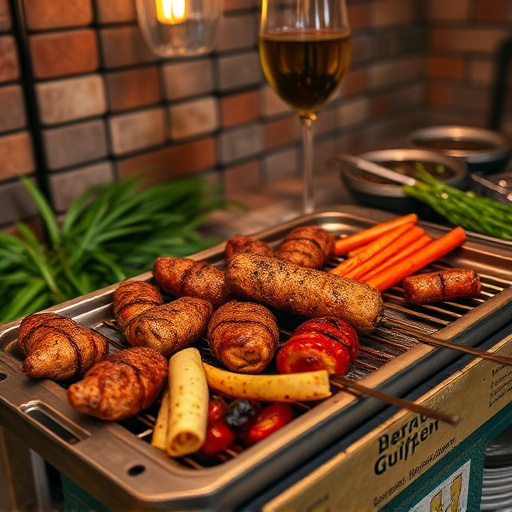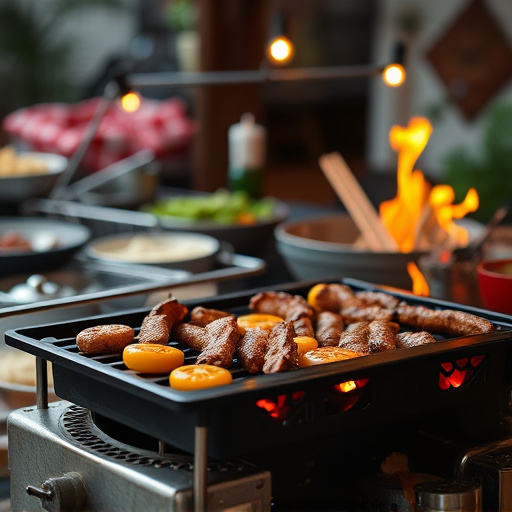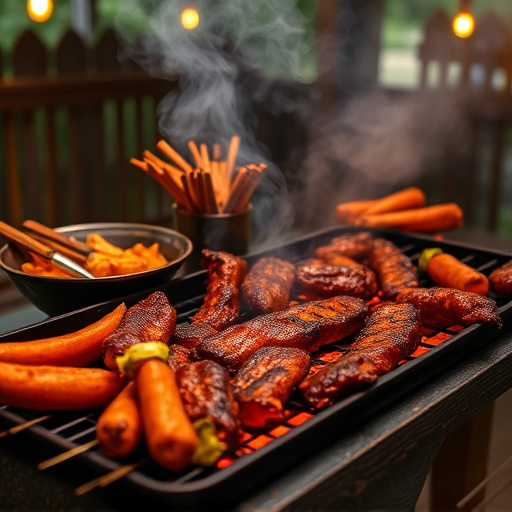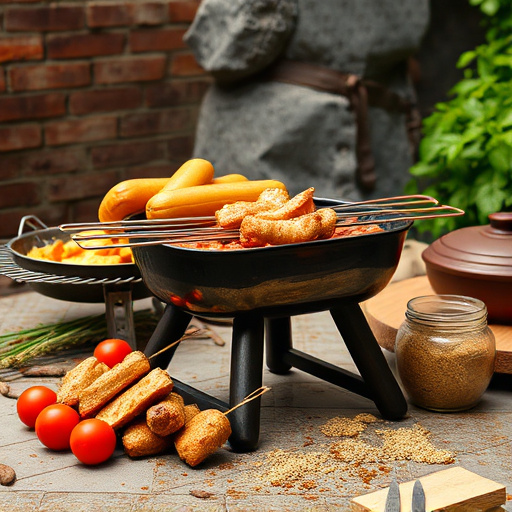Selecting the perfect BBQ baby back ribs involves choosing thick, meaty racks with uniform thickness and ideal fat marbling. Prepare them by removing membranes, seasoning with salt, and applying a dry rub for even cooking and maximum flavor. Use premium, aged ribs for enhanced taste and keep them chilled until cooking. The choice between dry and wet rubs impacts flavor: dry rubs offer robust, caramelized taste, while wet rubs tenderize but may dilute flavors. For a classic BBQ baby back ribs recipe, opt for dry rubs as a summer cookout staple.
Looking to perfect your BBQ game this summer? Achieve mouthwatering, tender baby back ribs with our comprehensive guide. We’ll walk you through every step, from selecting premium cuts and prep techniques to mastering indirect heat smoking and crafting irresistible glazes. Learn the secrets to a classic BBQ baby back ribs recipe that’ll be the star of any summer cookout.
- Choosing the Right Ribs and Prepping Them for Success
- – Selecting premium baby back ribs
- – Importance of dry rubbing vs. wet rub
Choosing the Right Ribs and Prepping Them for Success

When it comes to perfect BBQ baby back ribs for summer cookouts, choosing the right ribs is half the battle won. Look for meaty, uniform ribs with minimal bone separation. The cut should be between 1/2″ to 3/4″ thick, ensuring even cooking and tender results. Quality is key; opt for grass-fed or free-range ribs for better flavor. Before cooking, prepare your ribs properly for maximum success. This involves removing any membrane (a thin, tough layer) on the bone side using a knife or paper towel, then rubbing them with salt to draw out excess moisture and promote browning. A dry rub of spices can also enhance flavor, so experiment with a blend that suits your taste – a classic combination includes paprika, garlic powder, brown sugar, and pepper.
– Selecting premium baby back ribs

When it comes to selecting the perfect baby back ribs for your summer cookouts, quality is key. Look for ribs that are meaty, with a good marbling of fat—this ensures they’ll stay tender and juicy during the slow-cooking process. Opt for rib racks that are at least 1/2 inch thick to guarantee a hearty and flavorful meal. Premium ribs often come from well-raised livestock, which translates to better taste and texture.
For an exceptional BBQ baby back ribs recipe, choose ribs that have been dry-aged or wet-aged, as these methods enhance the natural flavors. Check for signs of freshness; prime rib racks should have a vibrant red color with some fat cap remaining. Proper storage and handling are crucial—keep them chilled until ready to cook to maintain their quality. With these simple considerations, you’re well on your way to hosting the best summer BBQ with mouthwatering results.
– Importance of dry rubbing vs. wet rub

When it comes to perfecting your BBQ baby back ribs recipe, the choice between a dry rub and a wet rub is key. A dry rub, made from a blend of spices, offers a robust, full-flavored experience. Its coarse texture provides a delightful crunch when cooked, allowing each bite to burst with seasoning. This method lets the natural sweetness of the ribs shine through while enhancing their flavor profile.
In contrast, a wet rub, which incorporates ingredients like vinegar or fruit juices, adds moisture and tenderness to the meat. While it can create an incredibly tender rib, the extra liquid may lead to a less intense flavor overall. For a classic, balanced BBQ baby back ribs recipe, many chefs prefer a dry rub for its ability to caramelize and add depth of taste during the slow cooking process, making them a summer cookout favorite.
